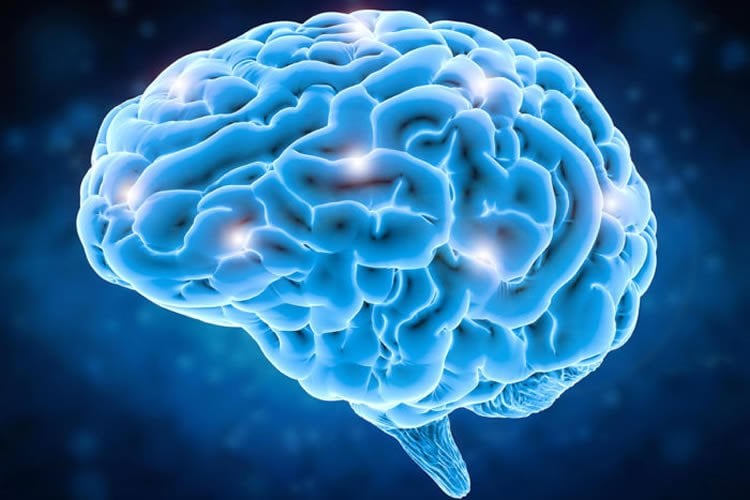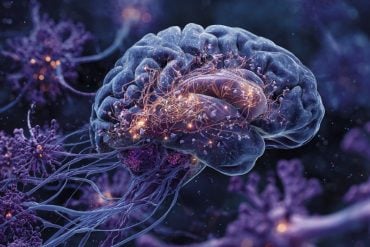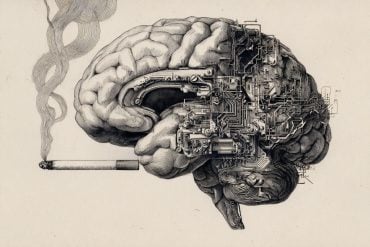Summary: Researchers reveal ultra slow waves of brain activity are linked directly to our state of consciousness.
Source: WUSTL.
If you keep a close eye on an MRI scan of the brain, you’ll see a wave pass through the entire brain like a heartbeat once every few seconds. This ultra-slow rhythm was recognized decades ago, but no one quite knew what to make of it. MRI data are inherently noisy, so most researchers simply ignored the ultra-slow waves.
But by studying electrical activity in mouse brains, researchers at Washington University School of Medicine in St. Louis have found that the ultra-slow waves are anything but noise. They are more like waves in the sea, with everything the brain does taking place in boats upon that sea. Research to date has been focused on the goings-on inside the boats, without much thought for the sea itself. But the new information suggests that the waves play a central role in how the complex brain coordinates itself and that the waves are directly linked to consciousness.
“Your brain has 100 billion neurons or so, and they have to be coordinated,” said senior author Marcus Raichle, MD, the Alan A. and Edith L. Wolff Distinguished Professor of Medicine and a professor of radiology at Mallinckrodt Institute of Radiology at the School of Medicine. “These slowly varying signals in the brain are a way to get a very large-scale coordination of the activities in all the diverse areas of the brain. When the wave goes up, areas become more excitable; when it goes down, they become less so.”
The study is published March 29 in the journal Neuron.
In the early 2000s, Raichle and others discovered patterns of brain activity in people as they lay quietly in MRI machines, letting their minds wander. These so-called resting-state networks challenged the assumption that the brain quiets itself when it’s not actively engaged in a task. Now we know that even when you feel like you’re doing nothing, your brain is still humming along, burning almost as much energy daydreaming as solving a tough math problem.
Using resting-state networks, other researchers started searching for – and finding – brain areas that behaved differently in healthy people than in people with brain diseases such as schizophrenia and Alzheimer’s. But even as resting-state MRI data provided new insights into neuropsychiatric disorders, they also consistently showed waves of activity spreading with a slow regularity throughout the brain, independently of the disease under study. Similar waves were seen on brain scans of monkeys and rodents.
Some researchers thought that these ultra-slow waves were no more than an artifact of the MRI technique itself. MRI gauges brain activity indirectly by measuring the flow of oxygen-rich blood over a period of seconds, a very long timescale for an organ that sends messages at one-tenth to one-hundredth of a second. Rather than a genuinely slow process, the reasoning went, the waves could be the sum of many rapid electrical signals over a relatively long time.
First author Anish Mitra, PhD, and Andrew Kraft, PhD – both MD/PhD students at Washington University – and colleagues decided to approach the mystery of the ultra-slow waves using two techniques that directly measure electrical activity in mice brains. In one, they measured such activity on the cellular level. In the other, they measured electrical activity layer by layer along the outer surface of the brain.
They found that the waves were no artifact: Ultra-slow waves were seen regardless of the technique, and they were not the sum of all the faster electrical activity in the brain.
Instead, the researchers found that the ultra-slow waves spontaneously started in a deep layer of mice’s brains and spread in a predictable trajectory. As the waves passed through each area of the brain, they enhanced the electrical activity there. Neurons fired more enthusiastically when a wave was in the vicinity.
Moreover, the ultra-slow waves persisted when the mice were put under general anesthesia, but with the direction of the waves reversed.
“There is a very slow process that moves through the brain to create temporary windows of opportunity for long-distance signaling,” Mitra said. “The way these ultra-slow waves move through the cortex is correlated with enormous changes in behavior, such as the difference between conscious and unconscious states.”

The fact that the waves’ trajectory changed so dramatically with state of consciousness suggests that ultra-slow waves could be fundamental to how the brain functions. If brain areas are thought of as boats bobbing about on a slow-wave sea, the choppiness and direction of the sea surely influences how easily a message can be passed from one boat to another, and how hard it is for two boats to coordinate their activity.
The researchers now are studying whether abnormalities in the trajectory of such ultra-slow waves could explain some of the differences seen on MRI scans between healthy people and people with neuropsychiatric conditions such as dementia and depression.
“If you look at the brain of someone with schizophrenia, you don’t see a big lesion, but something is not right in how the whole beautiful machinery of the brain is organized,” said Raichle, who is also a professor of biomedical engineering, of neurology, of neuroscience and of psychological and brain sciences. “What we’ve found here could help us figure out what is going wrong. These very slow waves are unique, often overlooked and utterly central to how the brain is organized. That’s the bottom line.”
Funding: This study was supported by National Institutes of Health, McDonnell Center for Systems Neuroscience.
Source: Judy Martin Finch – WUSTL
Publisher: Organized by NeuroscienceNews.com.
Image Source: NeuroscienceNews.com image is adapted from the WUSTL news release.
Original Research: Abstract for “Spontaneous Infra-slow Brain Activity Has Unique Spatiotemporal Dynamics and Laminar Structure” by Anish Mitra, Andrew Kraft, Patrick Wright, Benjamin Acland, Abraham Z. Snyder, Zachary Rosenthal, Leah Czerniewski, Adam Bauer, Lawrence Snyder, Joseph Culver, Jin-Moo Lee, and Marcus E. Raichle in Journal of Clinical Investigation. Published March 29 2018.
doi:10.1016/j.neuron.2018.03.015
[cbtabs][cbtab title=”MLA”]WUSTL “Slow and Steady Waves Keep Brain Humming.” NeuroscienceNews. NeuroscienceNews, 30 March 2018.
<https://neurosciencenews.com/brain-waves-consciousness-8715/>.[/cbtab][cbtab title=”APA”]WUSTL (2018, March 30). Slow and Steady Waves Keep Brain Humming. NeuroscienceNews. Retrieved March 30, 2018 from https://neurosciencenews.com/brain-waves-consciousness-8715/[/cbtab][cbtab title=”Chicago”]WUSTL “Slow and Steady Waves Keep Brain Humming.” https://neurosciencenews.com/brain-waves-consciousness-8715/ (accessed March 30, 2018).[/cbtab][/cbtabs]
Abstract
Spontaneous Infra-slow Brain Activity Has Unique Spatiotemporal Dynamics and Laminar Structure
Systems-level organization in spontaneous infra-slow (<0.1Hz) brain activity, measured using blood oxygen signals in fMRI and optical imaging, has become a major theme in the study of neural function in both humans and animal models. Yet the neurophysiological basis of infra-slow activity (ISA) remains unresolved. In particular, is ISA a distinct physiological process, or is it a low-frequency analog of faster neural activity? Here, using whole-cortex calcium/hemoglobin imaging in mice, we show that ISA in each of these modalities travels through the cortex along stereotypical spatiotemporal trajectories that are state dependent (wake versus anesthesia) and distinct from trajectories in delta (1–4 Hz) activity. Moreover, mouse laminar electrophysiology reveals that ISA travels through specific cortical layers and is organized into unique cross-laminar temporal dynamics that are different from higher frequency local field potential activity. These findings suggest that ISA is a distinct neurophysiological process that is reflected in fMRI blood oxygen signals.







